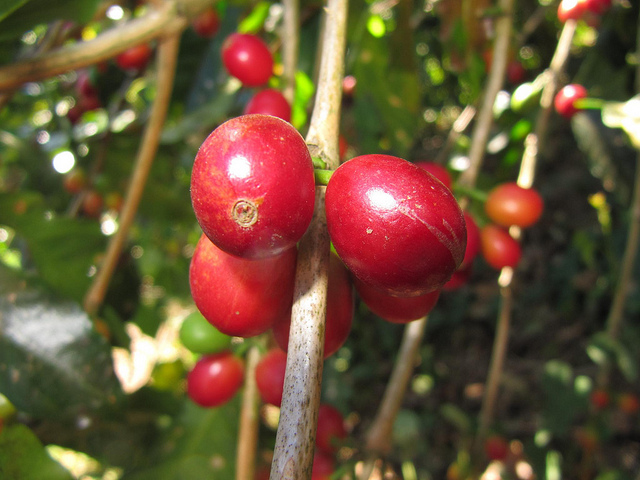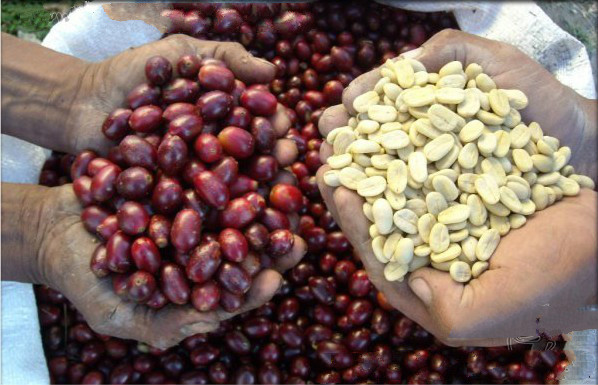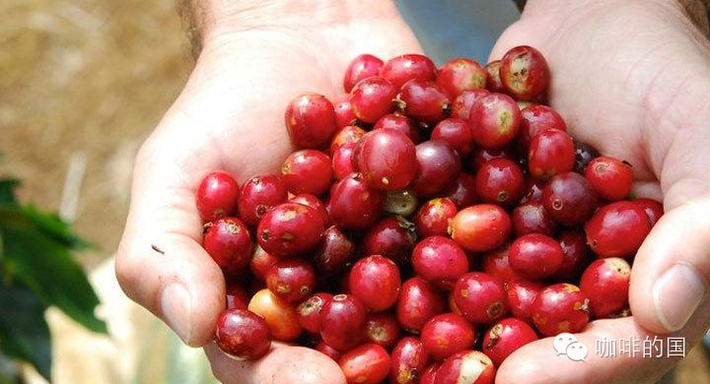Mocha Coffee Columbia Coffee Triple Crown King wants manor honey to treat rare varieties of mocha beans
The word Mocha has many meanings. Around 600 AD, the first coffee bean far from its hometown, Ethiopia, took root in Yemen on the other side of the Red Sea, and the coffee industry began all over the world. Since the most important export port of early Yemeni coffee was the port of Mocha, Yemeni coffee was also called "mocha" beans; mocha beans were small and strong, sour and mellow, moderate sweetness and special flavor. Washed coffee beans are well-known high-quality coffee, often drunk on a single basis. However, if mixed coffee can be blended, it is an ideal comprehensive coffee with ideal flavor.
Over time, some people began to use "mocha" as a nickname for coffee. Later, because the aftertaste of mocha coffee resembled chocolate, the word "mocha" was extended to be a mixture of hot chocolate and coffee.
Since the Italian Alfonso Bialetti invented the first mocha pot (MokaPod) in 1933, it provides all families with a simple and convenient choice to brew Italian coffee. As the first choice for brewing coffee at home, it is not too much to call BIALETTI the father of the mocha pot!
Therefore, the same mocha, mocha beans, mocha pot and espresso represent three meanings.
Today's Yemeni mocha (YemenMocha) is no different from its ancestors more than a thousand years ago, and is the most advanced traditional hand-dried bean-although it varies in size and contains a lot of impurities in raw beans. The two most common producing areas are Mattari and Sanani; Martari has more texture, chocolate and sour taste, while Sananani is more balanced and fragrant.
In the mixed coffee, mocha plays the role of this high-pitched voice, responsible for stimulating and improving flavor.
The variety of mocha round beans can be said to be the pearl treasure of the coffee industry. Since the El Injerto Manor in Guatemala was sold at an online auction for $211.5 a pound in 2011, it became a hit, and in 2012 it was sold at a crazy price of $500.5 a pound. The market has remained high-end these years, such as $321.51 a pound in 2014. After all, it is still a rare breed. There are not many manors planted and the yield of each tree is low. In addition, the bean-shaped special post-processing is very difficult. High-quality mocha beans are still hard to find.
In 2011, Incht Manor's first global bid for their first batch of Mocca mocha species was marked at US $211.5 / lb, surpassing the record of US $170.2 / lb for the first ESMERALDA GEISHA Jade Manor in BOP in 2010 and US $500.5 / lb in 2012, setting a world record and more noble than a geisha. Mocha (Mocca because the bean shape is very small, also known as small mocha) in Central and South America, the small mocha is not only small, but also has a low yield. generally, the mocha is about 10 to 11 orders, that is, the bean paste ranges from 0.39cm to 0.43cm, which is much smaller than the average 18-purpose Central American bean, which is 0.7cm. Notice that the little mocha has a flat surface, that is, a fruit contains two raw beans. Of course, small mochas also have small round beans, but the proportion is only 2%, which is much lower than the 5% to 10% of the average Arabica.
What we are launching this time is the honey-treated mocha beans from Caf é Granja La Esperanza, Columbia's Triple Crown Manor. Hope Manor has four estates (Esperanza, Las Margaritas, Cerro Azul and Potosi). Its manor won the Best of Panama Best Panama Champion (2008) and runner-up (2009) *. 2012 even arranged three seats in the top ten of SCAA Coffee of the Year with three products, the incredible number 2, 3 and 7. In GFA (Good Food Award), which has just been announced, Hope Manor has become the only award-winning estate outside Ethiopia, Kenya and Panama.

Important Notice :
前街咖啡 FrontStreet Coffee has moved to new addredd:
FrontStreet Coffee Address: 315,Donghua East Road,GuangZhou
Tel:020 38364473
- Prev

Grade A water washing treatment of pearl beans at PNG Kimmel Manor, Papua New Guinea, Indonesia
Located in the east of the Indonesian archipelago, Papua New Guinea, which is dominated by highlands, has a pattern of large manors / farms and small farmers, growing a variety of coffee varieties. The flavor of coffee in Papua New Guinea is very different from that of coffee from other Asian regions such as Indonesia, South Asia, India or the Pacific Islands; compared to Indonesian beans, which are mostly semi-washed (wet peeled).
- Next

How to choose coffee beans choose fresh coffee beans Columbia Santa Rita washing coffee beans
The history of coffee cultivation in Colombia can be traced back to the Spanish colonial era in the 16th century, and there are many theories about the history of coffee in Colombia: one: it is said to come from the island of Haiti in the Caribbean and from El Salvador in Central America. Second: in 1808, a priest introduced coffee beans to Colombia for the first time from the French Antilles via Venezuela. One of them
Related
- Does Rose Summer choose Blue, Green or Red? Detailed explanation of Rose Summer Coffee plots and Classification in Panamanian Jade Manor
- What is the difference between the origin, producing area, processing plant, cooperative and manor of coffee beans?
- How fine does the espresso powder fit? how to grind the espresso?
- Sca coffee roasting degree color card coffee roasting degree 8 roasting color values what do you mean?
- The practice of lattes: how to make lattes at home
- Introduction to Indonesian Fine Coffee beans-- Java Coffee producing area of Indonesian Arabica Coffee
- How much will the flavor of light and medium roasted rose summer be expressed? What baking level is rose summer suitable for?
- Introduction to the characteristics of washing, sun-drying or wet-planing coffee commonly used in Mantenin, Indonesia
- Price characteristics of Arabica Coffee Bean Starbucks introduction to Manning Coffee Bean Taste producing area Variety Manor
- What is the authentic Yega flavor? What are the flavor characteristics of the really excellent Yejasuffi coffee beans?

